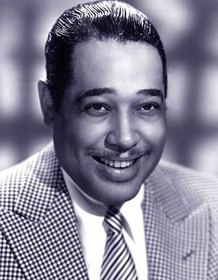Exploring the Artistic Explosion of the Harlem Renaissance
What Is The Harlem Renaissance?
The Harlem Renaissance is a crucial part of American history that cannot be overlooked! This “artistic explosion” brought a wave of creative expression and works of literature, art, music, and dance from the African American community. This period was a true testament to African Americans' resilience, strength, and determination during a time of oppression, one that paved the way for generations of African Americans to come. The Harlem Renaissance served as a platform for powerful messages and artwork of black life, and its reverberations can be found in today’s culture.
Come along and join me as we journey through the Harlem Renaissance and discover the beauty and power of this remarkable period in American history!
Visual Arts—Meta Vaux Warrick Fuller
“My work is of the soul, rather than the figure, and sometimes the figure must be very crude in order to carry the full strength of the spiritual meaning.” - Meta Vaux Warrick Fuller
Meta Vaux Warrick Fuller was an interdisciplinary artist and sculptor born in Philadelphia in 1877. She was the first African-American woman to receive a public art commission in the United States. Her work was heavily influenced by the Black American Experience using African themes. Fuller is remembered today for her groundbreaking work in the field of African American art and her dedication to social justice.
Music—Duke Ellington
Come Sunday (1943)
"Come Sunday" was derived from the spiritual movement of Duke Ellington's extended composition Black, Brown & Beige. The melody, along with the reverent lyrics represents Ellington’s belief in a God, and his earnest desire to communicate that faith through his music. In this recording, the somber tone of voice implies a alludes to a heavenly or powerful journey. I've observed that the lyrics of many spiritual songs, like this one, frequently resemble prayers. Do you consider this to be a necessary quality of spirituals?
As I explored this important era in history, I hope you not only saw the beauty that came from all the art created during this time but also the struggles that enslaved Africans experienced.






Responding to your question at the end of this post, I do not think all spirituals need to resemble prayers for two reasons. Number 1, people pray in different ways. Some spirituals do not resemble prayers to some people because they do not meet their understanding of what they consider to be prayer. Number 2, I do not like to make absolute statements on a broad term like spirituals. Even if I don't recall any spirituals that didn't resemble in some way or another, I believe that I am only just in the beginning stages of listening to and analyzing spirituals.
ReplyDeleteI enjoyed reading about Meta Vaux Warrick Fuller here. Her artwork is amazing and it shocks me how sculpters can bring so much life into stone or whatever medium they are using. Similarly to Ikenna, I don't believe resembling a prayer is a necessary characteristic of a spiritual. I do however think that this is a strong characteristic of a spiritual which is a theme we have observed in class. Lots of the songs we have listened to have biblical themes and sound similar to a prayer. In our most recent class the spirituals we listened to with new styles of composition from the Harlem Renaissance sound less like prayers that the earlier ones we heard. I get the sense that as we move through history spirituals will take many different forms.
ReplyDeleteI really enjoyed your analyses of the two sculptures made by Meta Vaux Warrick Fuller Rebecca. I like how both sculptures have metaphors for death as seen in the tree stump in the first and (obviously) the skull in the second. Talking head was also especially interesting to me because of how the skull could possibly represent our past as an enslaved people that can't be changed but remembered. Do you think that Fuller could have kept this motif of death as a staple throughout her work as a reference to remembering the past as well? I'd love to hear your opinion.
ReplyDeleteI really enjoyed reading this post and thought it was organized very well. I was excited to learn a bit more about Meta Vaux Warrick Fuller because I'd never really seen her work before. I think your short descriptions of each piece was a great idea and very helpful. I'm curious to see more of her pieces so I'll definitely be looking further into her thanks to you. To answer your last question, I don't think a spiritual needs to be a prayer to be considered a spiritual, because I feel that the definition of a spiritual is based on the history and experiences of enslaved Africans, whether faith is involved or not. Though, I do see the commonality of faith based lyrics throughout spirituals.
ReplyDeleteFirst of all, I absolutely love your layout and background. While reading your blog, I was really engaged mainly due to the many pictures and of course the video. I love the question that you posed at the end of your piece. I personally do think that a characteristic of spirituals is some sort of connection to God or a higher being. However, I do not think that it necessarily has to be a prayer structure. I would love to talk to you more about how you feel about that aspect of spirituals.
ReplyDelete